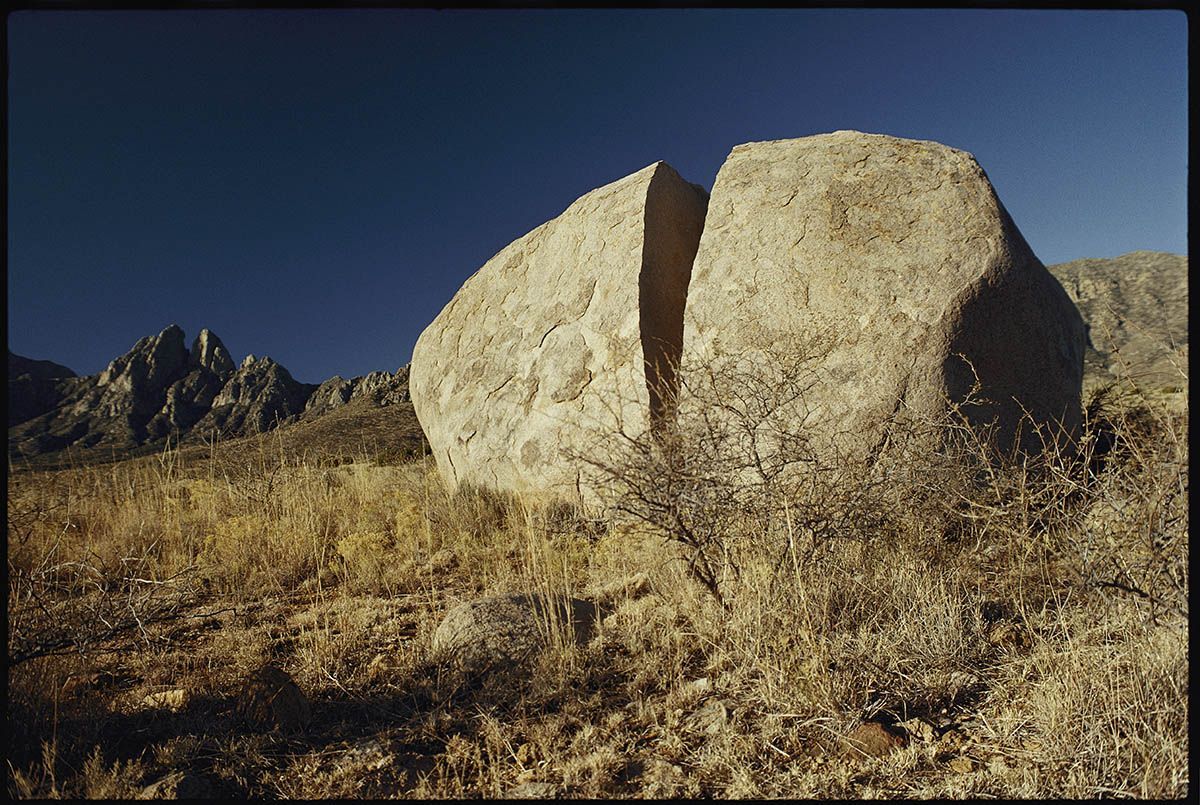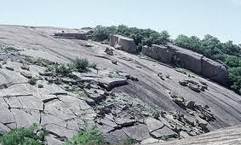Weathering and Its Type
Weathering, erosion,
and deposition are processes that act together to wear down and build up the
Earth's surface. These processes have
occurred over billions of years.
Weathering is breaking
down rocks, soil, and minerals by contacting the atmosphere, water, and
biological organisms of the Earth and takes place in situ, i.e. in the same place,
with little or no movement.
The weathering of rocks occurs through both
physical and chemical processes. Chemical weathering is decomposition of rock
caused by chemical reactions resulting in formation of new compound. Whereas Mechanical
(physical) weathering is the breakdown of rock into smaller pieces.
TYPES
OF WEATHERING
Physical Weathering
Physical
weathering, also called mechanical weathering, is a process that causes the
disintegration of rocks, mineral, and soils without chemical change. The
primary process in physical weathering is abrasion (the process by which clasts
and other particles are reduced in size). Physical weathering can occur due to
temperature, pressure, frost, root action, and burrowing animals. For example,
cracks exploited by physical weathering will increase the surface area exposed
to chemical action, thus amplifying the rate of disintegration.
Abrasion by water,
ice, and wind processes loaded with sediment can have tremendous cutting power
to forms gorges, ravines, and valleys around the world. In glacial areas, huge
moving ice masses embedded with soil and rock fragments grind down rocks in
their path and carry away large volumes of materials.
Where
does it occur?
Physical weathering
happens especially in places places where there is little soil and few plants
grow, such as in mountain regions and hot deserts.
How
does it occur?
Either through
repeated melting and freezing of water (mountains and tundra) or through
expansion and contraction of the surface layer of rocks that are baked by the
sun (hot deserts).
DIFFERENT
TYPE OF PHYSICAL WEATHERING
EXFOLIATION
Exfoliation
occurs as cracks develop parallel to the land surface a consequence of the
reduction in pressure during uplift and erosion.Typically in upland areas where
there are exposures of uniform coarsely crystalline igneous rocks.
How does it occur?
The
rock mass at depth is under high pressure from underlying rocks. It tends to be
uniform and lack fractures.
Once
the cracks develop, water enters and causes chemical weathering leading to the
formation of new low-density minerals. This enhances the cracks and encourages
slabs of rock to detach from the surface.
Block Distingation
Block
disintegration occurs due to repeated expansion and contraction of rocks during
day and night, causing stress on the joints of the rocks, which eventually
splits the rocks into blocks. It occurs in the area where the diurnal range of
temperature is very high.
Granular
disintegration
A
form of weathering where the grains of rock become loosened and fall out is
called Granular disintegration. It takes place in crystalline rocks, which
becomes rough on disintegration. Temperature and frost plays a vital role in
granular disintegration.
CHEMICAL WEATHERING
Chemical
weathering is predominantly high in the hot and humid regions such as the
equatorial, tropical and subtropical zones; because rainwater reacts with the
mineral grains in rocks to produce new minerals (clays) and soluble salts.
These reactions occur mainly when the water is slightly acidic.Chemical
weathering takes place through one of the following processes of oxidation,
carbonation, solution, and hydration. Oxygen, Carbon-dioxide, Hydrogen and
water are the agents of Chemical weathering.
Oxidation
Oxidation
is the reaction of oxygen in air or water with minerals present in the rock.
Most of the rocks contain iron in it, which when comes in contact with air
changes to iron oxide, familiar brownish crust or rust. Iron oxide crumbles
easily and is far more easily eroded than the original iron. Thus, it weakens
the overall structure and strength of the rock.
Carbonation
Carbonic
acid is the main agent when it comes to the carbonation type of chemical
weathering. As rain droplets pass through the air, it grabs carbon dioxide,
forming carbonic acid. This weak acid reacts with the calcium carbonate in
stones when it seeps into the cracks. Carbonation is significant in the
formation of caves in the limestone region.
Solution
Many
minerals are dissolved by water, especially when the rain-water contains enough
carbon dioxide to make it a weak acid. These dissolved minerals, when swept
away, leave the remaining particles loose. This breaks down the rocks.
Hydration
Certain
chemicals in the rock expands on the absorption of water in humid conditions.
These minerals swell and cause cracks and wearing of the rocks. This type of
weathering is called hydration.
DIFFERENT BETWEEN PHYSICAL WEATHERING AND CHEMICAL WEATHERING
Biological Weathering
Biological
weathering is the weakening and subsequent breakdown by plants, animals and
microbes of rock.
READ MORE
one day one concept CLICK HERE
GENERAL KNOWLEDGE PART 1 CLICK HERE
GEOLOGICAL TIME SCALE IN ENGLISH CLICK HERE
GEOLOGICAL TIME SCALE IN BENGALI CLICK HERE .
পৃথিবীর অন্দরমহলের বর্ননা click here
interior structure of the earth click here
KANT GASEOUS HYPOTHESIS CLICK HERE
কান্টের গ্যাসীয় মতবাদ CLICK HERE
Free note for REMOTE SENSING AND GIS CLICK HERE
Regional planning in india click here
NCERT CLASS_6 SHORT NOTE CLICK HERE
NCERT CLASS _6 SOLUTION CLICK HERE
ICSE class -ix click here
ICSE class -x click here
CLASS 6 WBBSE GEOGRAPHY CLICK HERE
জলবায়ুর শ্রেণীবিভাগপ্রশ্ন-উত্তর click here
REGIONAL THEORIES CLICK HERE
দ্বাদশ শ্রেণী ভূগোল CLICK HERE
CURRENT AFFAIRS CLICK HERE
NOTES OF HUMAN GEOGRAPHY AND AND POPULATION GEOGRAPHY click here
CONTINENTAL DRIFT THEORY BY FB TAYLOR CLICK HERE
CONTINENTAL DRIFT THEORY BY TAYLOR IN BENGALI CLICK HERE
CONTINENTAL DRIFT THEORY BY WEGNER CLICK HERE
CLIMATE OF INDIA CLICK HERE
ভূমিরূপ গঠন কারী প্রক্রিয়া ; উচ্চমাধ্যমিক ভূগোল click here
বহির্জাত প্রক্রিয়া ও তার ফলে সৃষ্ট ভূমিরূপ click here
মহিসঞ্চারন তত্ত্ব click here
Ugc net 2007 june paper 2 geography click here
Ugc net 2006 december paper 2 geography click here
UGC NET GEOGRAPHY 2007 DECEMBER CLICK HERE
UGC NET GEOGRAPHY 2008 JUNE CLICK HERE
WB CLASS 6 GEOGRAPHY CHAPTER 4 CLICK HERE
UGC NET GEOGRAPHY 2009 JUNE CLICK HERE
PLATE TECTONIC THEORY CLICK HERE
NCERT CLASS 7 GEOGRAPHY CLICK HERE
CORAL REEF IN BENGALI NOTE CLICK HERE
CORAL REEF CLICK HERE
HS GEOGRAPHY CLICK HERE
GEOGRAOHICAL TERM click here
NTA NET GEOGRAPHY PYQS- MODELS AND THEORIES, 2020-2006, PART-1 CLICK HERE
NTA NET GEOGRAPHY PYQS- MODELS AND THEORIES, 2020-2006, PART-2 CLICK HERE
NTA NET GEOGRAPHY PYQS- MODELS AND THEORIES, 2020-2006, PART-3 CLICK HERE
NTA NET GEOGRAPHY IMPORTANT ONE LINER , 2020-2006, PART-1 CLICK HERE
NTA NET GEOGRAPHY CLIMATOLOGY PYQS 2020-2006 PART 1 CLICK HERE
NTA NET GEOGRAPHY GEOMORPHOLOGY 2020-2006 PART 1CLICK HER E

















0 Comments